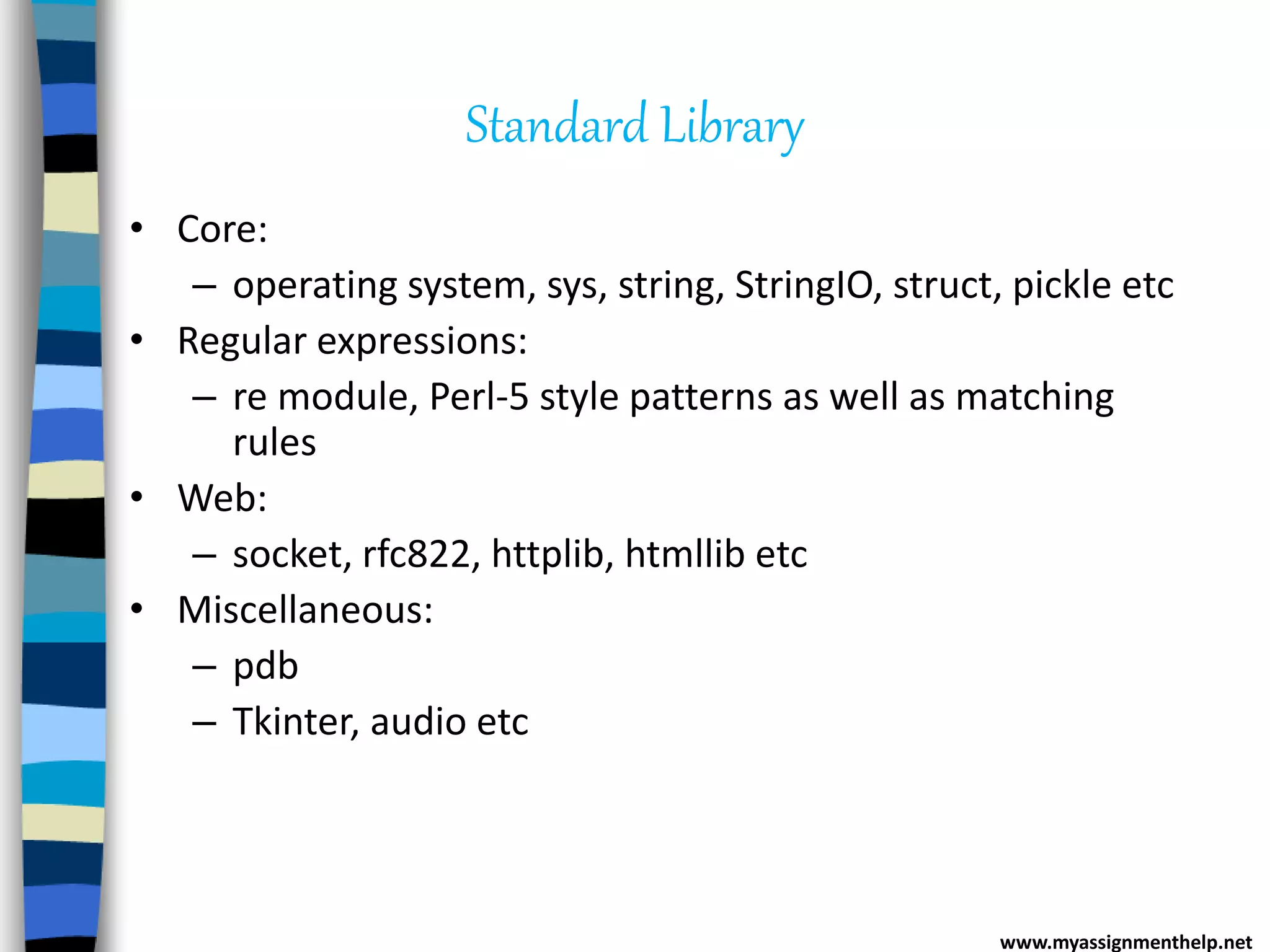The document provides an overview of Python, highlighting its characteristics as a multi-purpose, interpreted, and object-oriented language. It covers fundamental concepts such as variables, data types, and structures like lists, tuples, and dictionaries, along with basic syntax for using the Python interpreter. Additionally, it outlines Python's extensive standard library and emphasizes its readability, productivity, and ease of learning.
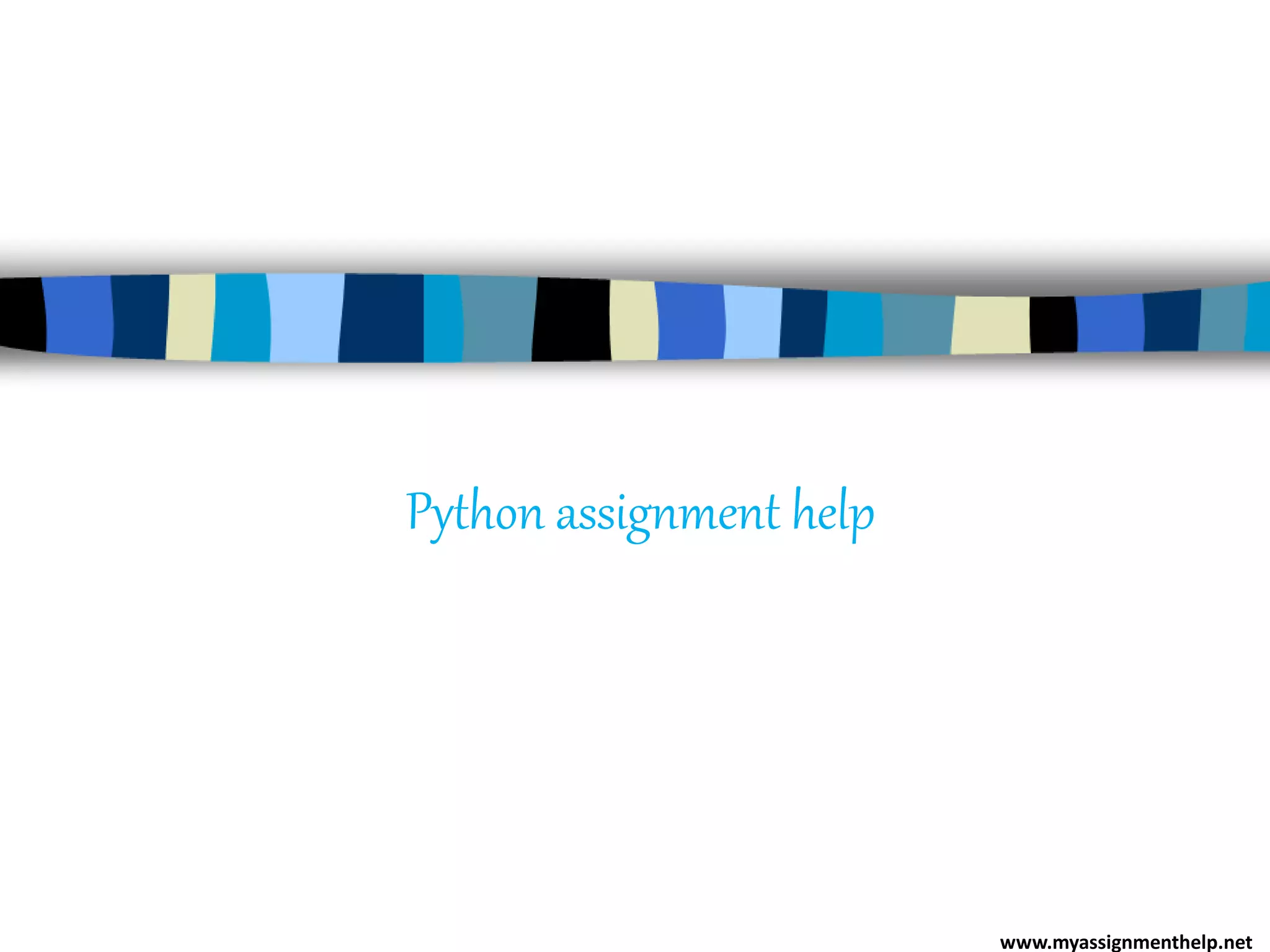
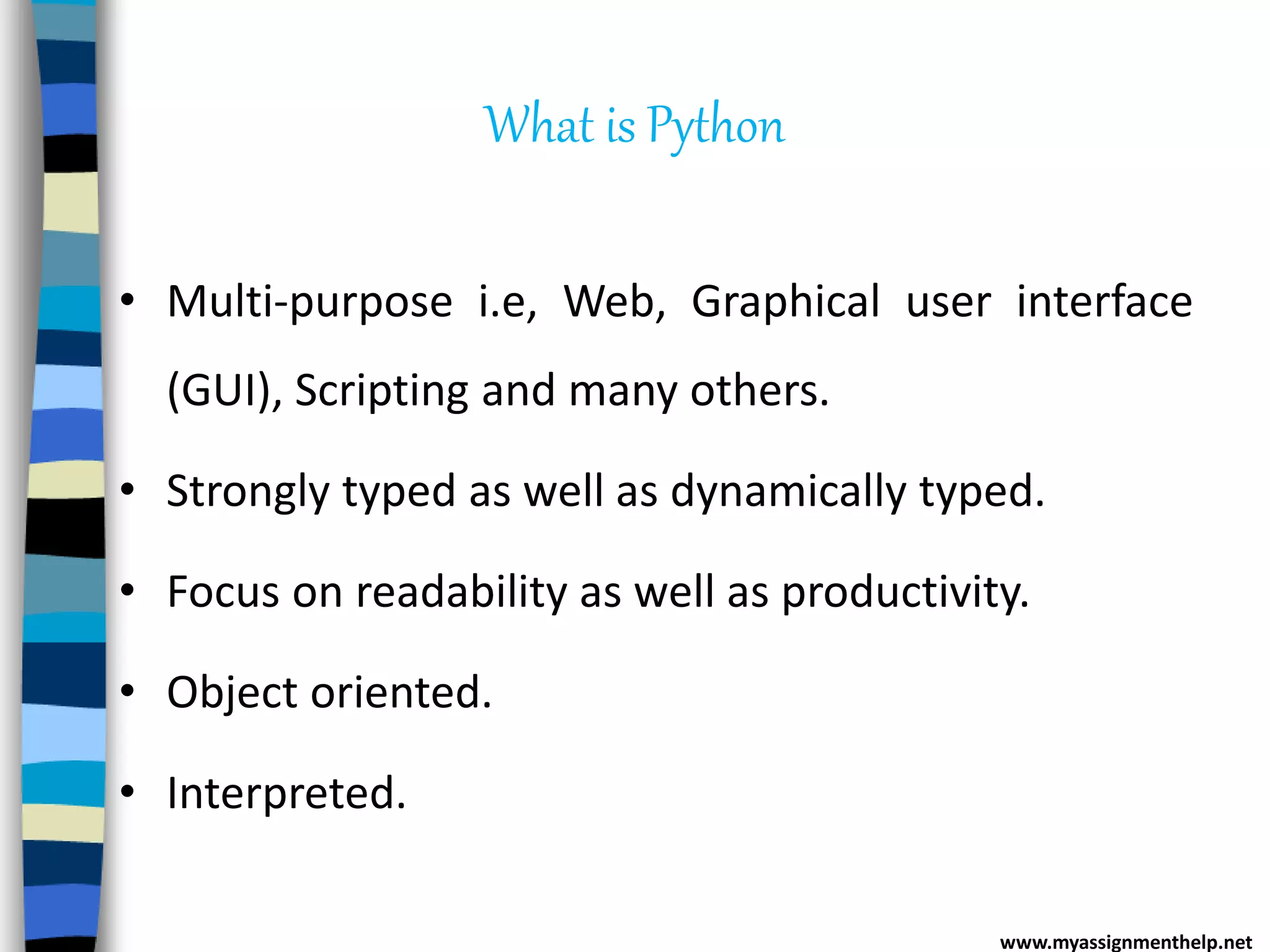
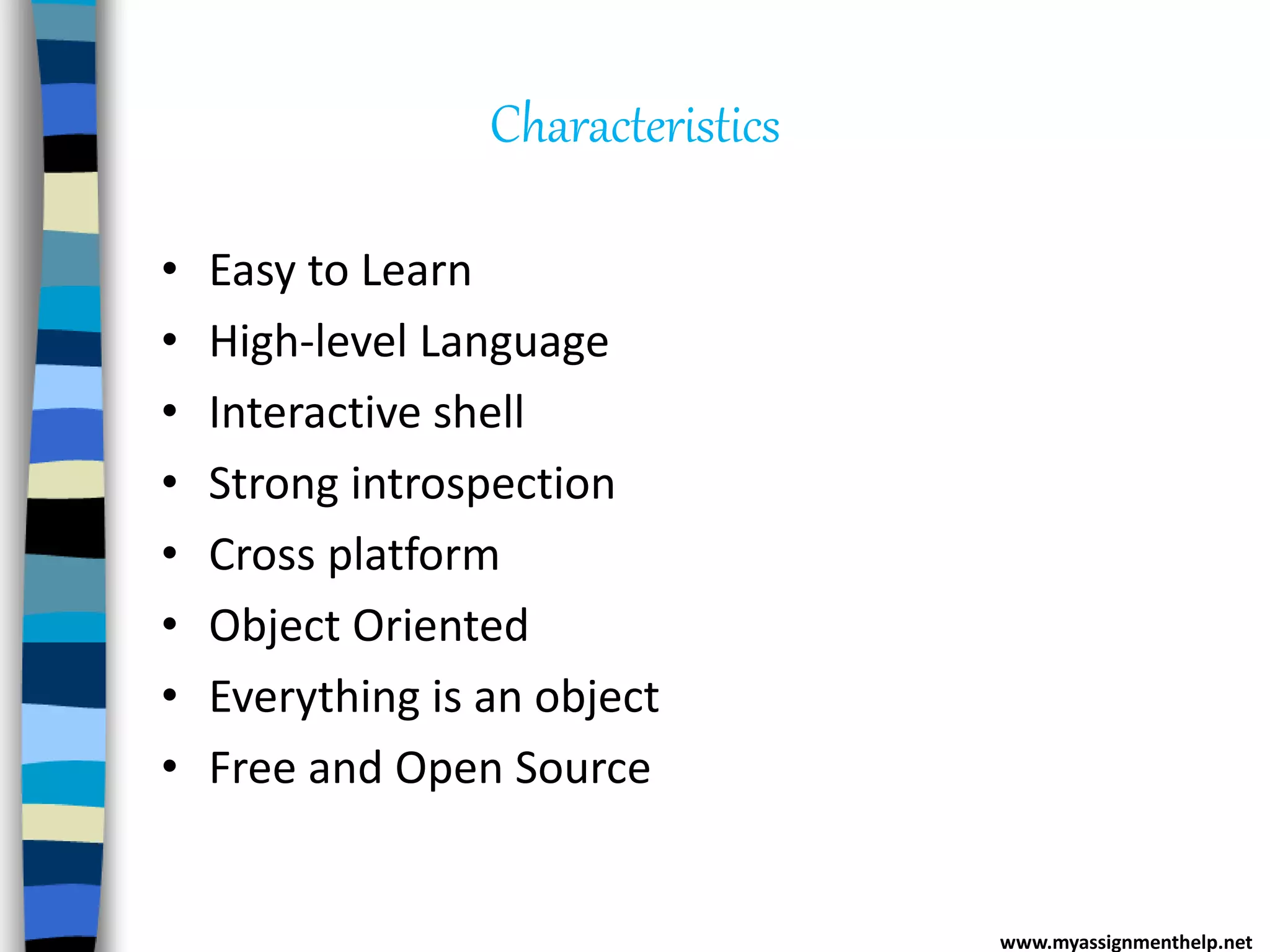
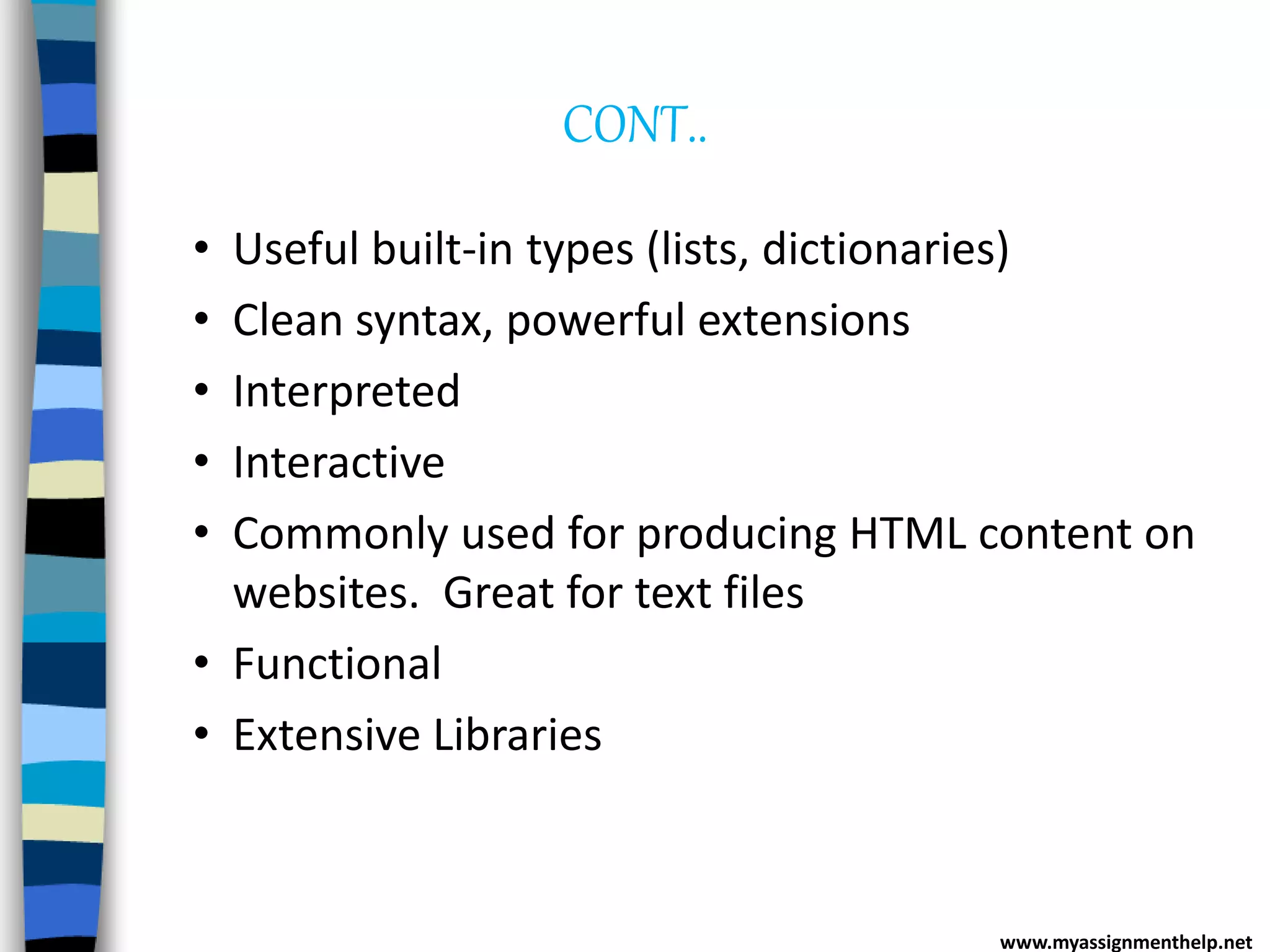
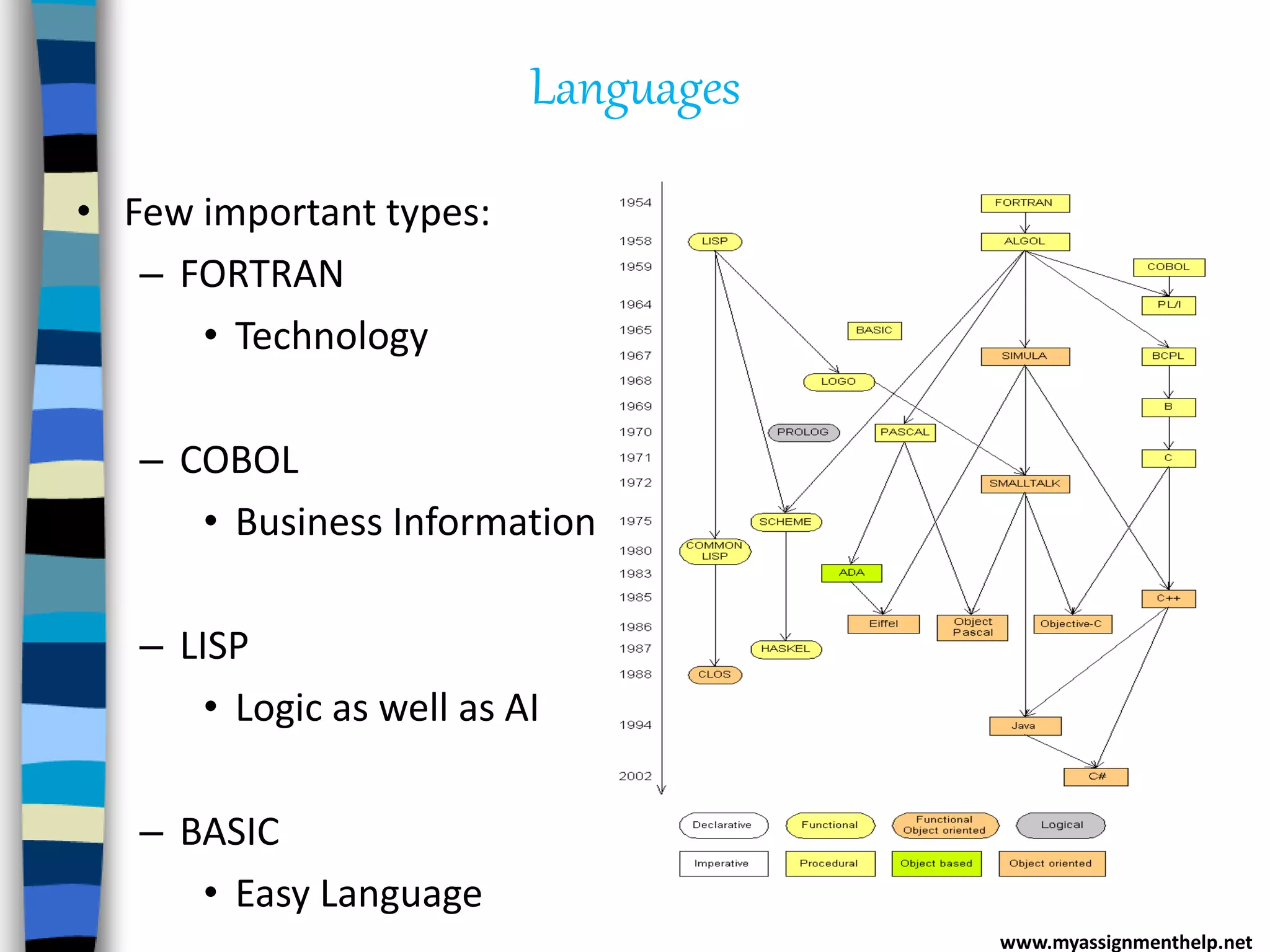
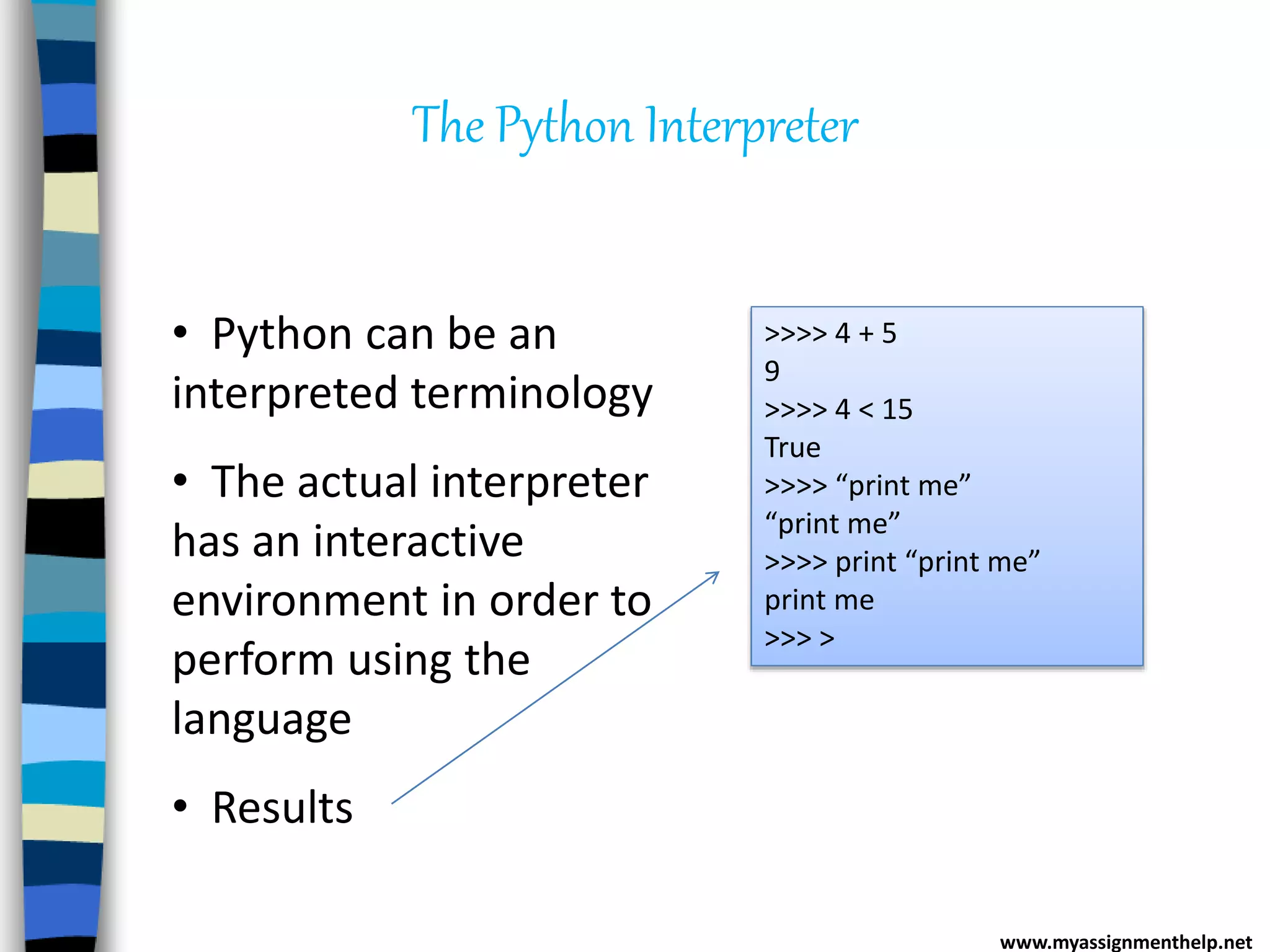
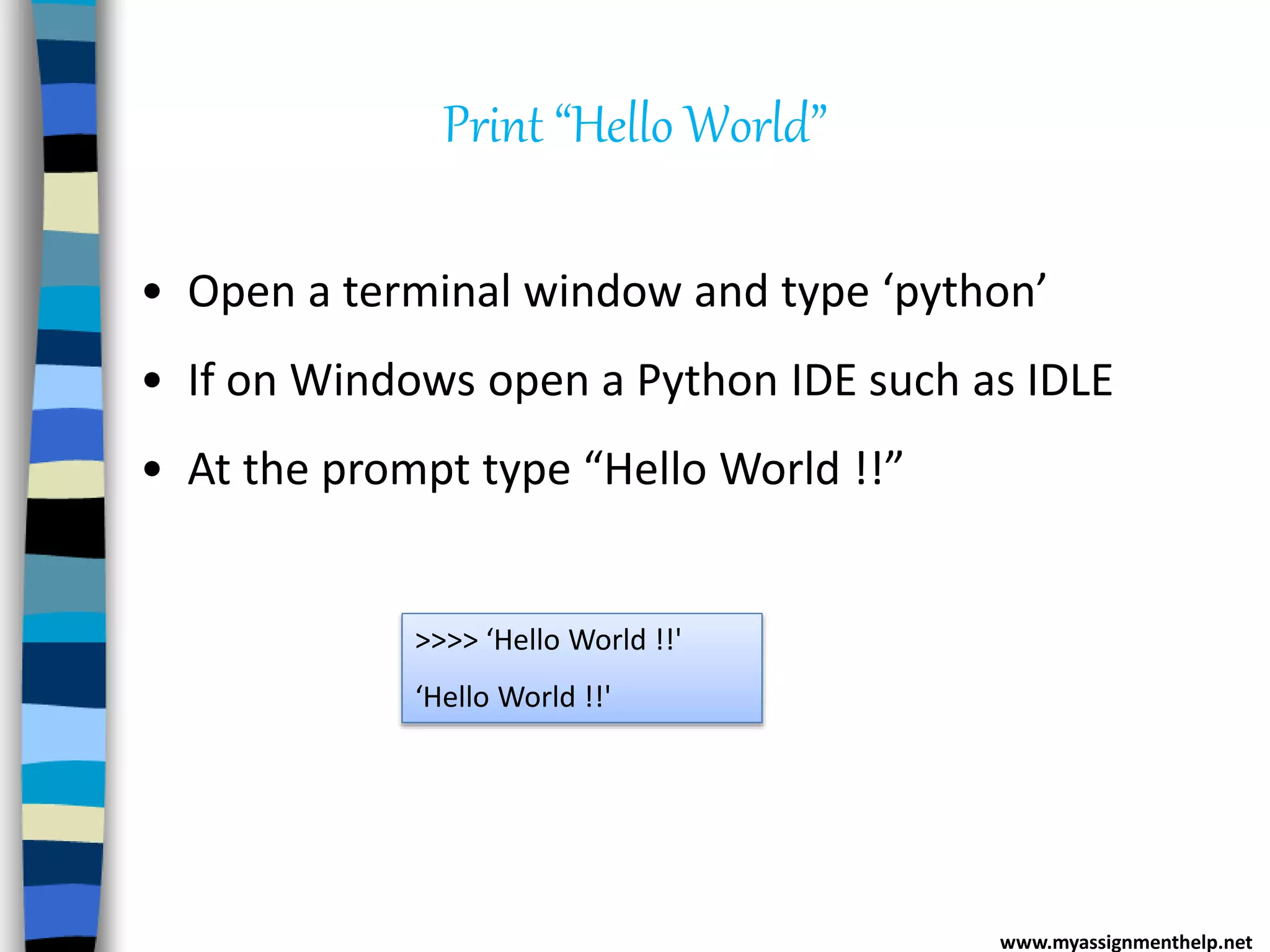
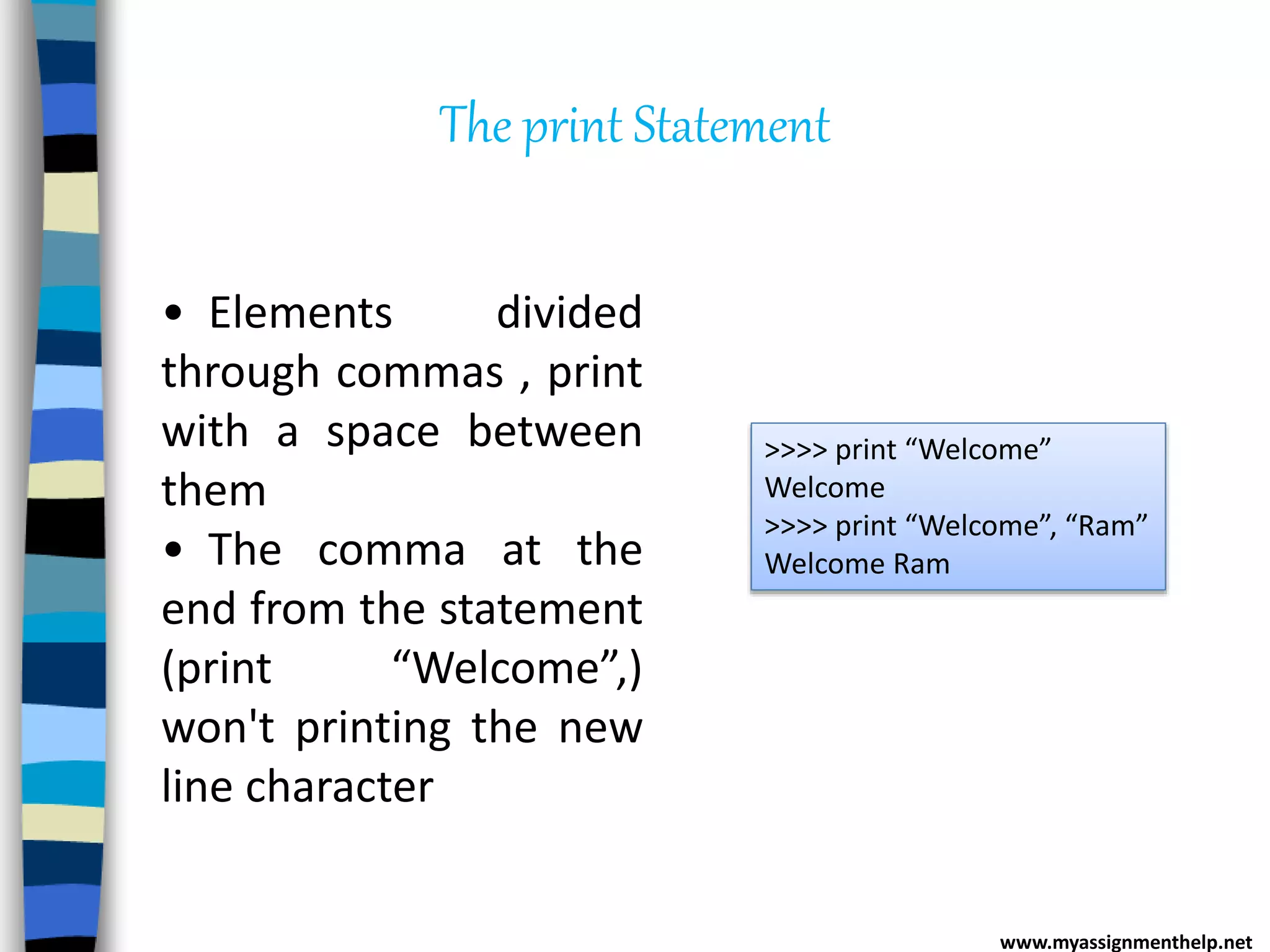
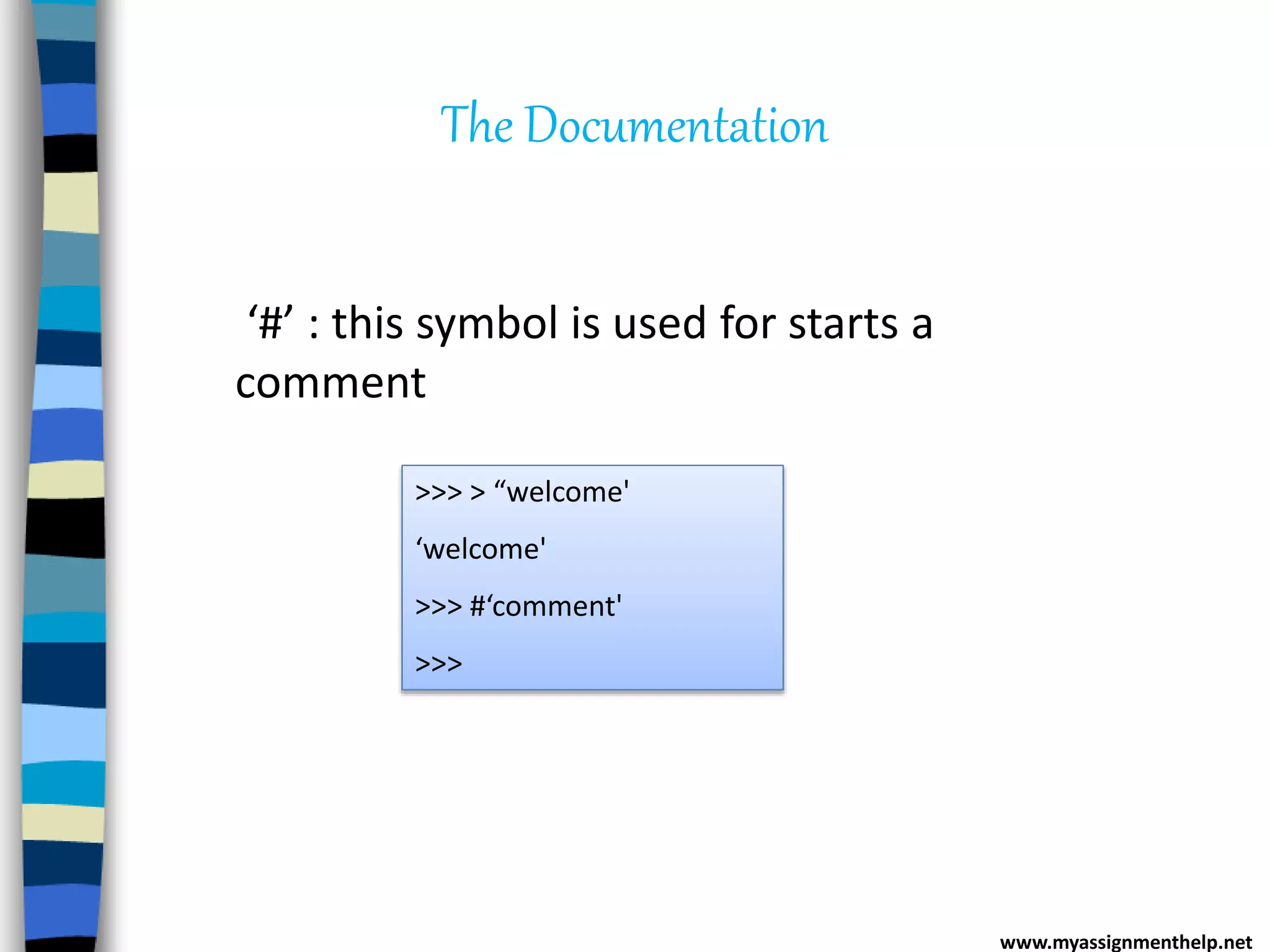
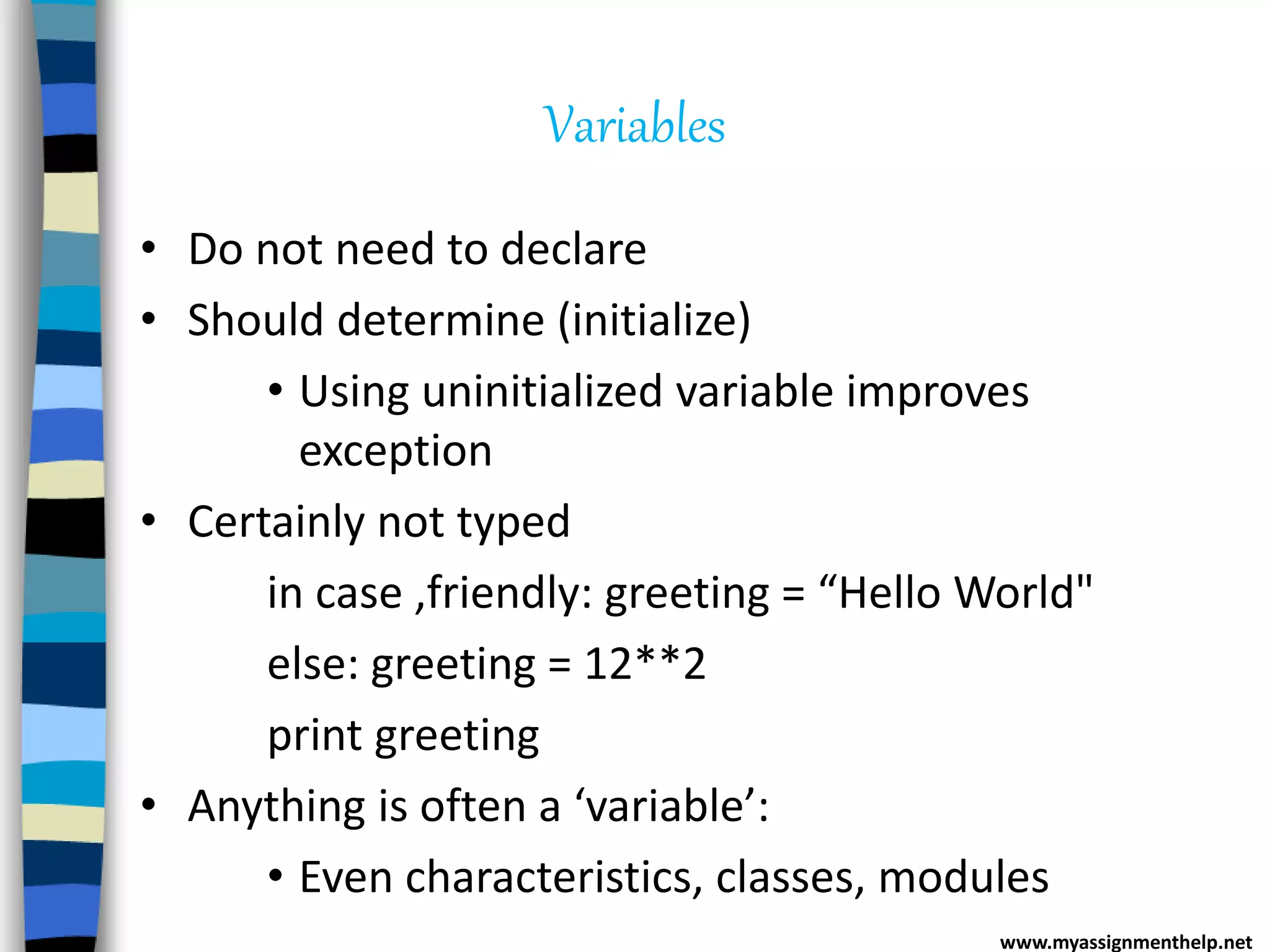
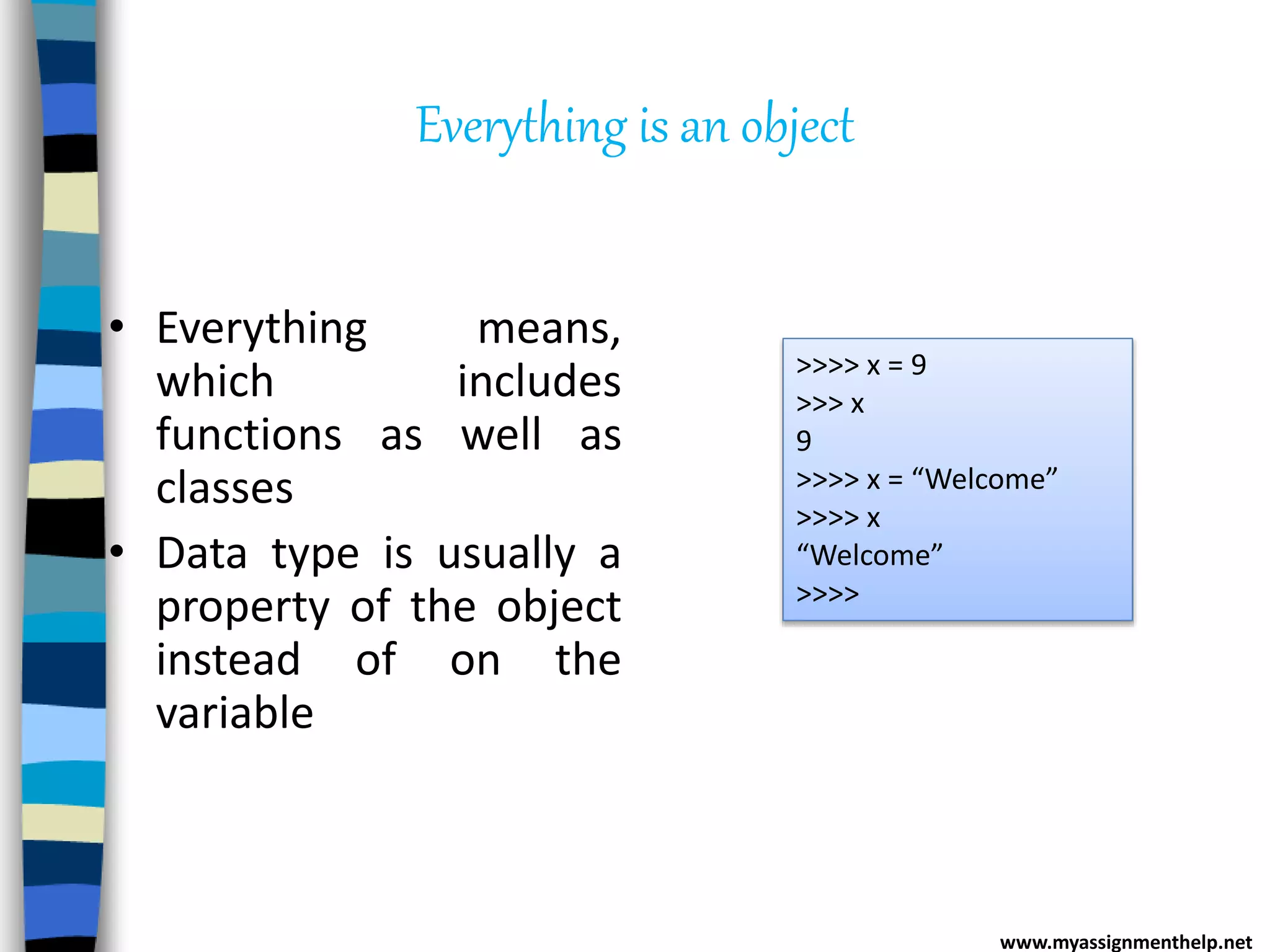
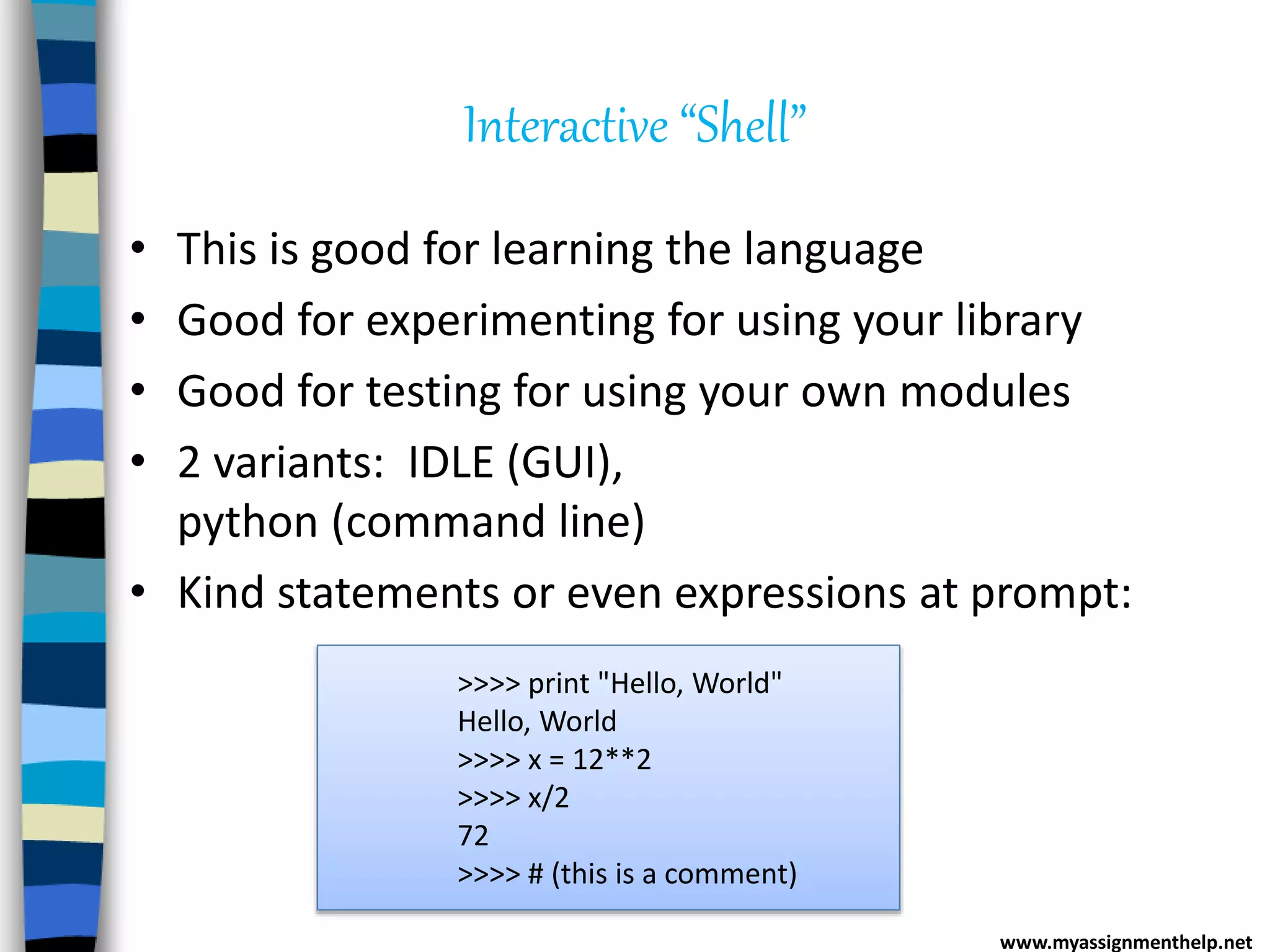
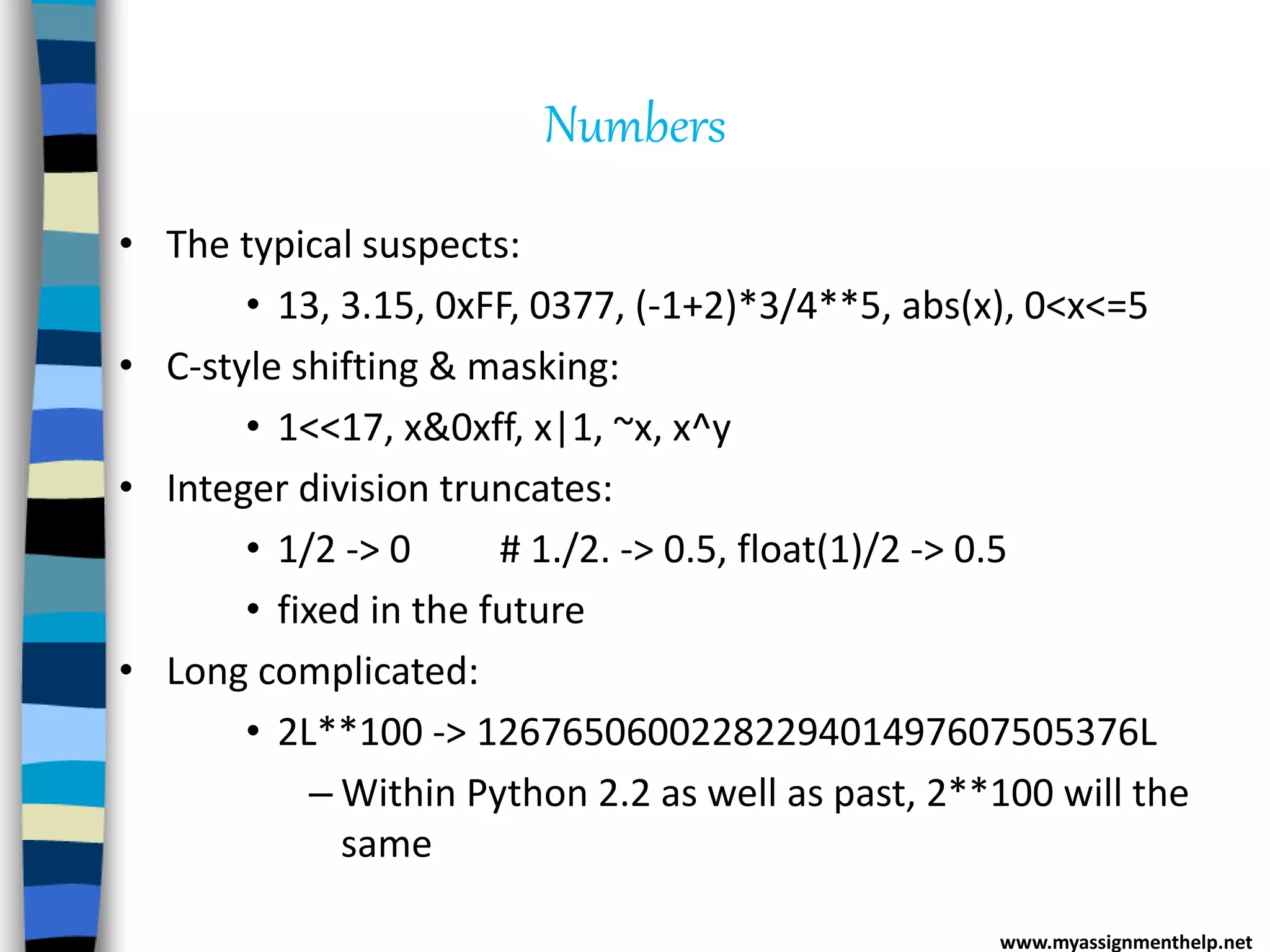
![Strings
• ‘Hello’+ ‘World’ ‘HelloWorld’ # Concatenation
• ‘Hello’*2 ‘HelloHello’ # Repetition
• ‘Hello’[0] ‘h’ # Indexing
• ‘Hello’[-1] ‘o’ # (From end)
• ‘Hello’[1:4] ‘ell’ # Slicing
• len(‘Hello’) 5 # Size
• ‘Hello’< ‘jello’ 1 # Comparison
• ‘e’ in ‘hello’ 1 # Search
• ‘escapes: n etc, 033 etc, if etc’
• 'single quotes' """triple quotes""" r ‘raw strings’
www.myassignmenthelp.net](https://image.slidesharecdn.com/python-assignment-help1-160105044838/75/Python-assignment-help-14-2048.jpg)
![Lists
• Variable arrays, definitely, not Lisp-like
linked lists
• x = [99, [‘on’, ‘the’, ‘wall’]]
• Exact same providers for strings
• x+y, x*3, x[0], x[-1], x[1:], len(x)
• Item and slice assignment
• x[0] = 98
-> [98, [‘on’, ‘the’, ‘wall’]]
• del x[-1] # -> [98]
www.myassignmenthelp.net](https://image.slidesharecdn.com/python-assignment-help1-160105044838/75/Python-assignment-help-15-2048.jpg)
![Tuples
• Tuples tend to be
immutable versions
associated with lists
• One strange may be the
structure to create a tuple
along with one element:
‘,’ is required to
differentiate from the
numerical expression (2)
>>>> a = (1,2,3)
>>> >a[1:]
(2, 3)
>>>> b = (2,)
>>> >b
(2,)
>>> >
www.myassignmenthelp.net](https://image.slidesharecdn.com/python-assignment-help1-160105044838/75/Python-assignment-help-16-2048.jpg)
![Dictionaries
• Some key-value sets
• Dictionaries tend to be mutable
>>> x = {1 : ‘Welcome', ‘Two' : 32, ‘Hi' : [4,5,6]}
>>> x
{1: ‘Welcome', ‘Two': 32, ‘Hi': [1, 2, 3]}
>>> x[‘Hi']
[4,5,6]
www.myassignmenthelp.net](https://image.slidesharecdn.com/python-assignment-help1-160105044838/75/Python-assignment-help-17-2048.jpg)
